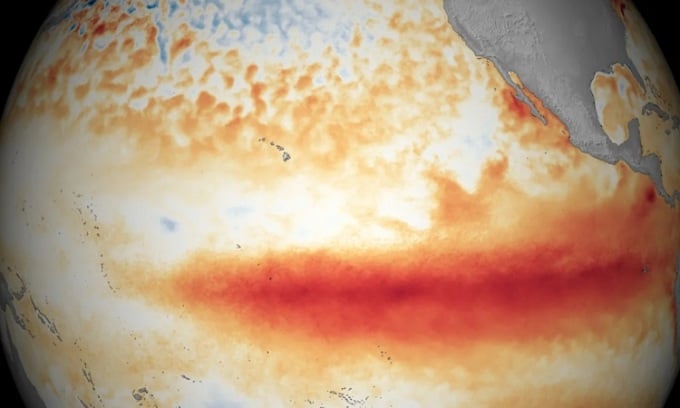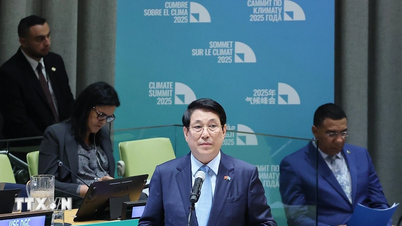The World Meteorological Organization warns that a hot El Niño developing in the coming months and human-caused climate change will push temperatures to unprecedented highs, reaching new records in the next five years.

Temperatures in the Pacific Ocean warmed due to a strong El Niño in January 2016. Photo: NOAA
Global temperatures are likely to exceed the Paris Agreement's 1.5°C threshold within the next five years, according to a United Nations (UN) report. The UN's World Meteorological Organization (WMO) warned in its latest annual assessment. According to the WMO, there is a 66% chance that annual global surface temperatures will rise by more than 1.5°C above pre-industrial levels. This would be the first time in human history that such a rise has been recorded.
Scientists warn that temperatures exceeding the 1.5 degree Celsius threshold will increase the risk of tipping points, which could trigger irreversible climate change such as the collapse of the Greenland and West Antarctic ice shelves, extreme heat, severe drought, water shortages and extreme weather in large areas of the world.
About 200 countries pledged to limit global temperature rises to 1.5 degrees Celsius or lower under the 2015 Paris Agreement. Now that limit may be exceeded for the first time, albeit temporarily.
The expected warm El Niño that develops in the coming months will combine with human-caused climate change to push global temperatures to unprecedented highs, according to Petteri Taalas, secretary-general of the WMO. That will have far-reaching consequences for health, food security, water management and the environment.
El Niño occurs when the trade winds (which normally push warm water westward across the Pacific Ocean from South America to Asia) weaken, leaving more warm water in place. This phenomenon has a strong influence on climate patterns around the world, making South America wetter and bringing drought to areas like Australia, Indonesia, northern China and northeastern Brazil. In the US, El Niño tends to make the north warmer and drier while the south becomes wetter because the warm water spreads out and stays near the sea surface, warming the air above.
The latest WMO report looks at the period from 2023 to 2027. It says there is a 98% chance that a year in that period will be the hottest on record, exceeding 2016's 1.28°C rise. The chance of global temperatures exceeding the 1.5°C threshold is near zero in 2015, 48% in 2022 and up to 66% in 2023. The researchers say the warming is uneven. The Arctic, for example, will experience three times more temperature variability than the rest of the world, driving ice melt and severely impacting climate systems like the North Atlantic jet stream and ocean current, which play a key role in regulating temperatures in the Northern Hemisphere.
Meanwhile, rainfall will decrease in Central America, Australia, Indonesia and the Amazon. Deforestation, climate change and fires have caused the vast rainforest that has not recovered since 2000 to be converted to grassland.
An Khang (According to Live Science )
Source link








































![[Photo] President Luong Cuong receives President of the Cuban National Assembly Esteban Lazo Hernandez](https://vphoto.vietnam.vn/thumb/1200x675/vietnam/resource/IMAGE/2025/9/30/4d38932911c24f6ea1936252bd5427fa)
![[Photo] Panorama of the cable-stayed bridge, the final bottleneck of the Ben Luc-Long Thanh expressway](https://vphoto.vietnam.vn/thumb/1200x675/vietnam/resource/IMAGE/2025/9/30/391fdf21025541d6b2f092e49a17243f)

































































Comment (0)